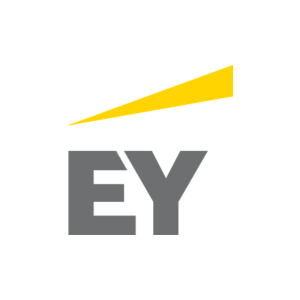
During a career with EY spanning more than 25 years, Leigh Miller has amassed a huge expertise in the field of valuation. During this time he has worked extensively with standards and regulatory bodies throughout the world and in doing so is helping to shape the valuation profession of the future. The IVSC caught up with Leigh to find out more about his current areas of focus, and to gather his thoughts on the major challenges and opportunities facing the valuation sector.
Qu 1: Tell us a bit about your role at EY?
LM: My role is global leader for the Valuation and Business Modelling (VBM) group within EY’s Transaction Advisory Services practice. At its core, my role is about aligning our worldwide practices around a singular vision for what we want the VBM group to represent in the marketplace. Over the past several years, the group has become more than just a traditional valuation practice, offering integrated solutions to advise our clients beyond the transaction cycle.
EY has around 3,500 people in the valuation network across almost 80 countries, with more than 200 partner level professionals. The global VBM group is run out of London, with about one third of the practice based in the US.
Our primary focus is on the full range of large/small public and private corporations, investors and private equity accounts. We serve our clients with a full range of services throughout the transaction cycle and beyond.
 Qu 2: So would you say your business is mostly concentrated on transactions and the transaction cycle?
Qu 2: So would you say your business is mostly concentrated on transactions and the transaction cycle?
LM: Traditionally, our focus has been in the transaction cycle, but we are seeing growth in off-transaction types of valuation advisory and advanced decisioning services. Increasingly we are helping clients with their analytics and their internal value-based decision making processes.
Qu 3: Are you seeing any changes in the types of clients or sectors that your business is working with?
LM: I would say that clients are expecting more sector focus and certainly we have been aligning our business that way over the last five years. This is something we will continue to evolve going forward. Our objective and our client’s expectations is moving towards a ‘one solution’ provider.
We’ve found that the more integrated we are in the services provided, the more success we have. This integration goes beyond valuation services and encompasses the entire transactions platform, drawing on expertise from other parts of EY’s Transaction Advisory Services and Advisory businesses.
Qu 4: How are you and EY involved with IVSC – why do you see that as being important?
LM: EY has been a sponsor of the IVSC for many years and I myself have been a member of the former Standards Board (now the Standards Review Board) which was responsible for issuing IVS 2017 and prior editions. EY also has several other people who are actively involved in, and contributing to the IVSC’s technical standards boards, including the Tangible Assets Board, the Business Valuation Board and the Financial Instruments Board. I feel it is part of EY’s responsibility within the valuation community to support and uphold the rigor around valuation qualifications and standards for the benefit of all our stakeholders.
Qu 5: So how does EY gain benefit from their involvement with IVSC?
LM: I believe that a global set of standards for valuation is important. Having a globally aligned set of standards where people around the world can approach valuation issues in a consistent way is necessary to foster quality and international best practice. It’s important to EY and our clients, to the wider industry, to regulators and all users of valuation data.
For them, transparency, quality and consistency is really a critical issue. An international organisation like IVSC that can put forward globally agreed standards plays an important role in establishing quality, consistency and transparency around valuation and fair value measurements. The regulators that I speak to around the world are quick to echo the same themes. For them, quality and consistency in valuation and fair value measurement is an important component in the financial reporting process.
 Qu 6: Are concerns around quality and consistency growing among regulators or have they always been so quick to highlight the challenges?
Qu 6: Are concerns around quality and consistency growing among regulators or have they always been so quick to highlight the challenges?
LM: I think the issue has increased a great deal in its level of importance since the global financial crisis in 2008/09. There have been various voices in the regulatory community, criticising the valuation profession for the lack of quality and consistency; other groups have been asking for better standards, in particular in the US where a number of chief accountants from the SEC have made comments in this area. The profile of the valuation profession has been raised, and not always in a positive a light. That said, I do think this presents an opportunity for the valuation profession as a whole to step-up and respond with standards and credentials that ensure a high bar of professionalism in everything we do.
I think standards from IVSC and the credentials now being offered by member organisations of the IVSC, such as the CEIV credential, are intended to address a lot of the concerns regulators have raised over the recent years. In fact, the traction that we’ve seen in recent years with IVS and professional credentials have occurred precisely because of the profile and the scrutiny that the regulators have given to some of the things in the profession. Their concern has helped to move the agenda on and to reassert the importance of global standards and a robust valuation profession. But even with these steps and the positive acknowledgement from our stakeholders, there is still much to do.
Qu 7: Are there valuation trends or “hot topics” which you are seeing across your business or more generally in the marketplace?
LM: I would point to three broad themes or hot topics which are shaping the valuation industry as a whole:
- Economic and political uncertainty
Although the political and economic landscape is always influencing and shaping valuation and wider business practice, right now there seems to be a lot of uncertainty at both national and macro levels. From tax reform in the US to international trade policy and the impacts of Brexit, there are many issues shaping companies decision-making, or their deferral of decision-making for that matter. External factors have resulted in us staying ever present and connected at our clients and a growing need to account for the impact of market volatility and uncertainty in our analyses.

- Automation and its impact on all aspects of business
Automation is certainly a development which is shaping and influencing business. It is having an impact on the businesses we are valuing (more specifically, the way in which our clients manage their businesses) and the way in which EY incorporates new technology into our own business practices. It’s a trend that will continue to grow in influence and disruption of traditional business models in the years to come.
- Regulation
I would say that in years past, while there has been greater regulatory interest in some areas of valuation, there have also been regulatory steps back in areas where valuation intersects financial reporting. It’s been a push and a pull between on the one hand regulation scrutiny driving valuation professionalism forward and, on the other hand, regulators writing valuers out of certain aspects of the financial reporting process.
Qu 8: Tech and data is a topic that comes up a lot, certainly around the emergence of new platforms, approaches and data. What impact is this having on the expectations of your clients?
LM: There are two potential impacts of automation and data: With more data we should be able to achieve more fact-based and analytical conclusions, and more data potentially increases the accuracy of our work. But at the same time, I spend a lot of time contemplating the impact of automation, especially its potential to obviate professional judgement over time because of an over-reliance on algorithms.
However, it’s worth noting that this is just the latest round of conversation on the subject of new technology and its impact on valuation. We’ve been here before with Excel models for valuation, with sophisticated macros to pull data in, it’s the umpteenth version. What is clearly different now is the pace of change that is occurring.
Automation is not a new topic but it does bring with it some new concerns around quality assurance and professional judgement. As you introduce new software, or new artificial intelligence, where are the logical places for humans to intervene and make sure the work is being done appropriately? Then, over the next 5-10 years how do we ensure we build a workforce that has the ability to develop the expertise and the judgements to intervene and to know when something is right or wrong?
 In our profession transparency is essential because almost all of the work we do needs to be reviewed by a third party. The challenge with the emergence of new technologies is how do you design in to the automation process the ability to produce all the documentation that someone will check, and who is doing the checking? It’s a fascinating question which is going to have a huge impact on how we think of things going forward, how to we do things quicker and more efficiently whilst at the same time maintaining the same level of quality, consistency and transparency that is demanded from our profession.
In our profession transparency is essential because almost all of the work we do needs to be reviewed by a third party. The challenge with the emergence of new technologies is how do you design in to the automation process the ability to produce all the documentation that someone will check, and who is doing the checking? It’s a fascinating question which is going to have a huge impact on how we think of things going forward, how to we do things quicker and more efficiently whilst at the same time maintaining the same level of quality, consistency and transparency that is demanded from our profession.
Qu 9: Is there a link that needs to be made between standards and the emergence of automation in valuation?
LM: This is something I’ve been thinking about for some time. I believe there needs to be a professional standard around the obligations of someone using automation, artificial intelligence or robotic software tools as part of the valuation process. What is their obligation to understand what has been done and not to over rely on something that is in essence a black box? How do we ensure that accountability isn’t just shifted over to the software or the algorithm?
I believe we need professional standards that help us to manage the impending growth in new technology and data.
Qu 10: What are the key challenges that you and your business faces relating to valuation?
LM: With the rise of automation things can get commoditised quickly and I view the valuation profession as still having a very significant role to play in the financial reporting process. We need to always be in a position to be able to demonstrate that value to clients, regulators and users of valuations – and the only way we can do that is by assuring high levels of quality in everything we do, in every sector and every country that we operate.
Qu 11: How much of that comes down to needing to educate the client end of the valuation process?
LM: My view is that the way we demonstrate value to clients is by providing a high-quality work product every time. There are lots of examples of how much additional work may be needed in the audit process when low-quality work is done. I’m not sure all clients have an appreciation of that until there is a quality issue that proves to be very disruptive.
Qu 12: What are the opportunities for the valuation profession over the next few years?
LM: The main opportunity is to work to increase the visibility and credibility of the profession. When I say that, I think particularly in the US where the profession has been criticized in recent years. The opportunity centers on adopting standards, working with new credentials that set a higher bar on quality, consistency and transparency and then committing and holding to that higher bar.
Qu 13: Is it important that the valuation profession per se works in a united fashion to restore credibility, or should it be done in an asset-specific way?
LM: No, I think the entire valuation profession needs to think of itself as a profession as a whole because that’s the way the regulators think about it. Even though there are different skillsets that have expertise in the valuation of different asset classes, the regulators view as a one single profession. If ultimately the regulators were to decide that they are unhappy with the valuation profession and they were going to regulate us in some way – then those regulations would likely impact all of us together, not just the valuers of one asset class.
The other thing I would say, which some may consider controversial and/or disagree, but I’m not too sure we actually have a ‘valuation profession’ today. While I do believe we have many talented valuation professionals, I’m not convinced we have all of the mechanisims neccessary to behave as a Profession and be percieved by third parties as a Profession (similar to say, Chartered or Certified Public Accountants) and that is what we are trying to build.
Qu 14: What leads you to take that view?
LM: Well, in many markets we see organisations that are member organisations that are primarily focused on offering credentials and training but not necessarily interested in regulating their membership. I would suggest that these organisations are often better defined as trade associations rather than professional organisations. Professional organisations monitor their people, they assure the quality of their work and they have the power to enforce penalties or withdraw a credential if necessary. None of those characteristics have existed routinely amongst the member organizations representing valuation professionals. The sector absolutely consists of many highly talented professionals, but we are not yet a unified profession.
To me, this is about ‘the rise of professionalism’. A profession requires education, qualifications, credentials, standards etc. but it also requires enforcement and it requires monitoring. It requires the involvement of independent third parties to determine whether somebody is doing their job correctly.
 Qu 15: What’s the driving force behind the continued rise of professionalism and the creation of a valuation profession?
Qu 15: What’s the driving force behind the continued rise of professionalism and the creation of a valuation profession?
LM: That comes back to my earlier regulatory comments. I think there is a growing awareness that the results of a valuation matter and that consistency and quality must improve. These comments alone are fuelling a new determination to advance professionalism in valuation.
Qu 16: You’ve been involved in the creation of a new Business Valuation credential which is being developed by three IVSC member organisations, AICPA, ASA and RICS. What is the genesis of the CEIV project and what does it aspire to achieve?
LM: The genesis is all the regulatory scrutiny we’ve seen over the last decade. We sat down and spoke to regulators about their concerns which focused on quality issues, in particular around financial instruments but also more generally around valuations related to fair value measurement.
When we studied all the sets of standards that were available, we realised that they were primarily looking at ethics and the minimum professional requirements, supported by various organizations issuing papers providing technical guidance. What was missing was a set of standards around “how much work” is needed to produce a robust work product that is transparent and provides self-evident support for conclusions. Not what to do or how to do it, those were covered, but there was nothing on how much work to do; how robust the documentation needs to be, for example. The goal of the CEIV credential and the Mandatory Performance Framework standards was to address this “gap” in standards – which is how much work a valuation professional should do to produce a well-documented, robust valuation work product that is auditable.
Qu 17: And when you say ‘how much work they need to do’, how is that measured?
LM: So that’s what the standards talk about – how much documentation do you need to produce, what you need to think about etc. But at the end of the day, it needs to be auditable and audited based on the evidence that’s in the report or the work files, and that’s a big change. A valuation report might look similar to the way it looked 5 years ago but now everybody should have the level of robust documentation needed to support the assumptions they have made.
It is also intended to enhance transparency. Anyone should be able to pick up a report and be able to see where the numbers have come from and what the support for those assumptions are. The whole idea is to put the valuation profession on a path to establishing credibility that the work we do is of high quality, consistent and transparent. It raises the bar for everybody.
Qu 18: How will EY respond to CEIV?
LM: The way we’re looking at CEIV and the Mandatory Performance Framework (MPF) that underlies the credential is that for the first time we have a document that codifies best practice.
Firms like EY have always “expected” valuations to be done in a manner consistent with the MPF, but we are hoping that this will clarify what best practice involves, it formalises the approach to be taken and should raise the standard across the whole industry, enhancing the profession as it does.
Qu 19: What is the timescales for how CEIV rolls out?
LM: I would say I’m hoping for a two year transition period where we introduce the adoption of the CEIV’s MPF to our audit teams and to our clients and move them from awareness to adoption. That adoption might take a further 18 months and then over the following years we are hoping these new standards will really get traction.
Qu 20: How does CEIV align with IVS?
LM: It’s important to highlight that the CEIV credential was developed as complementary to IVS and it reflects the wording of IVS 2017. It is intended to make a valuation report more easily reviewed as part of the documentation in the audit process.